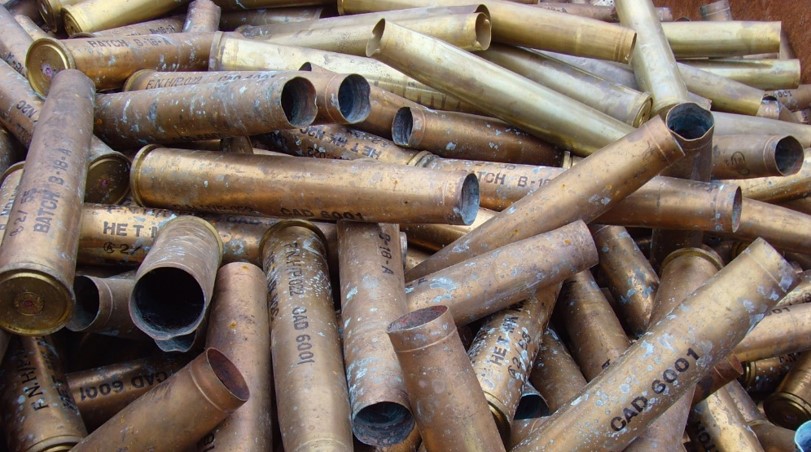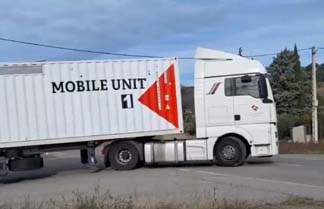
In the urgency to dispose of surplus or unserviceable Small Arms Ammunition (SAA), the method of open burning (OB) has historically been relied upon, prioritising immediate stability and security over long-term environmental responsibility.
However, this practice carries significant environmental risks, particularly concerning heavy metal pollution and air contamination.
A comprehensive evaluation conducted in Canada highlighted the alarming heavy metal contamination resulting from OB, where complete rounds containing toxic metals and materials such as Lead, Antimony alloy, Strontium, Molybdenum, and Carbon Tetrachloride are incinerated, leading to adverse environmental and consequent health impacts.
Without stringent control measures, this incineration process can exceed critical thresholds, releasing lead-contaminated particulates into the environment. Low-temperature burning leads to the release of these materials into the atmosphere.
While OB is convenient and supposedly cost-effective for disposing of smaller quantities of SAA, it presents considerable drawbacks. Despite its simplicity and low initial costs, OB generates substantial air pollution, contributing to dense smoke plumes containing harmful volatile organic compounds. Furthermore, the inefficiency of OB prolongs the disposal process, requiring significant cooldown periods between burns and limiting the frequency of operations to once in two to three days.
While OB is convenient and supposedly cost-effective for disposing of smaller quantities of SAA, it presents considerable drawbacks. Despite its simplicity and low initial costs, OB generates substantial air pollution, contributing to dense smoke plumes containing harmful volatile organic compounds
Moreover, the practical implementation of OB often overlooks the long-term labour health and environmental costs associated with the method. While initially inexpensive, its cumulative expenses and environmental impact over time far outweigh the perceived benefits. The reliance on OB for SAA disposal may seem economical at first glance, but the prolonged labour-intensive process ultimately escalates costs and pollution levels. This also has long-term adverse health effects on the people engaged in such activity.
In contrast, investing in cleaner and more efficient alternatives, such as advanced disposal technologies, presents a promising solution to mitigate environmental harm and ensure long-term sustainability in ammunition disposal practices. These advanced systems utilise state-of-the-art filtration and temperature control mechanisms to minimise pollution and maximise efficiency.

One such alternative is mobile and transportable industrial ammunition demilitarisation equipment, which offers flexibility and efficiency in disposal processes. Integrated into standardised maritime containers, these systems require minimal support infrastructure for installation and operation.
These systems, fit within a 40-foot ISO container or two 20-foot containers, including essential components like generators, compressors, filtration units, and lifting legs. Despite the initial investment, these systems offer long-term cost savings and environmental benefits compared to traditional OB methods.
Furthermore, advancements in incineration technology have led to the development of high-temperature, controlled systems capable of efficiently disposing of SAA while minimising environmental impact. These systems employ rigorous temperature monitoring and pollution control measures to ensure compliance with global environmental regulations and safeguard public health. However, these systems do not focus on recoveries.
Mobile and transportable industrial demilitarisation equipment offers flexibility and efficiency in disposal processes. Integrated into standardised maritime containers, these systems require minimal support infrastructure for installation and operation
In addition to addressing environmental concerns, transitioning away from OB towards advanced disposal technologies offers economic benefits. While the initial investment may be higher, the long-term cost savings from reduced labour, transportation, and pollution control outweigh the upfront expenses. Moreover, these technologies create more opportunities for public-private partnerships and innovation in the defence manufacturing sector.
While open burning may offer a quick solution for SAA disposal, its environmental consequences and inefficiencies highlight the urgent need for more sustainable and responsible demilitarisation methods.

In contrast to the OB system, a mobile or transportable clean SAA disposal system, developed by KA Safe Engineering, Spain and presented in India by Lodestar Strategic, the defence subsidiary of BEKEM Infra Projects of Hyderabad, offers a significant advancement in ammunition disposal. This system incorporates de-bulleting technology and goes a step further by separating all the ammunition components. The recovered materials have substantial value in rupee terms, contributing to the recovery of the equipment cost for the customer in approximately 18 months.
In contrast to the OB system, a mobile or transportable clean SAA disposal system, developed by KA Safe Engineering and presented in India by Lodestar Strategic, the defence subsidiary of BEKEM Infra Projects of Hyderabad, offers a significant advancement in ammunition disposal. This system incorporates de-bulleting technology and separates all the ammunition components for recycling
Investing in cleaner and more efficient alternatives, such as advanced incineration technologies and mobile demilitarisation equipment, is essential to mitigate environmental harm, ensure long-term sustainability, and promote economic growth in the defence industry in India.
-The writer, a retired army officer is the Founder and CEO of Lodestar Strategic Pvt Ltd, the defence subsidiary of BEKEM Infra Projects – India’s largest Hydro Mechanical Engineering company. Lodestar has partnered with KA Safe, Spain for indigenisation in demil equipment and projects. The views expressed are of the writer and do not necessarily reflect the views of Raksha Anirveda















